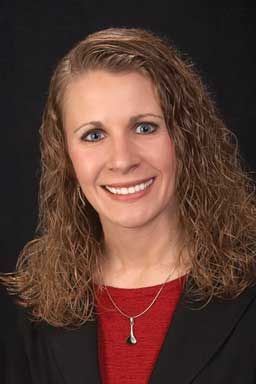I’m sure all of you can relate to my feeling of having hit the ground running upon my return from the 45th AASV Annual Meeting. I hope all who were able to attend enjoyed the conference and brought at least one new idea home to implement into practice in accordance with our veterinarian’s oath.
One of my favorite parts of every AASV Annual Meeting is the awards reception on Monday evening. I enjoy trying to guess the identity of each award recipient as the speaker describes his or her personal characteristics and professional contributions. Every year I am excited for the awardees and proud that our association has so many incredibly deserving members. Congratulations again to those who were recognized this year. That showcase of talent and service followed by the AASV Foundation auction, abundant with donated items and generous bids, makes for a fun evening and, to me, is tangible evidence of the character of our members.
Another testament to the dedication of our membership is the attendance at our committee meetings Saturday morning prior to the conference. Serving on a committee doesn’t pay well in cold hard cash, but it does pay dividends in getting to know your colleagues and expanding your knowledge on a particular subject – and, of course, it provides the gratification of serving the association in an important capacity. If you currently serve on an AASV committee, I would like to extend my sincere thanks for your contributions. If you are not currently a committee member, I would like to take this opportunity to invite you to peruse the various committees within the organization, select one of interest to you, and join!
In addition to your active involvement in the AASV, I encourage you all to be active members of the American Veterinary Medical Association (AVMA). As Dr Daryl Olsen indicated Monday morning in his Howard Dunne Memorial Lecture, there is an increasing disconnect between the AASV and the AVMA as we continue to be a shrinking percentage of their total membership. There are several opportunities for AASV members to serve on AVMA councils and committees, as Dr Clark Fobian (AVMA president) said during our breakfast meeting on Tuesday morning. We are fortunate in that all our “reserved” seats are currently being filled by our members. I encourage you to volunteer to serve the next term on one of those committees and actively engage with AVMA staff and leadership. It is one of the most important ways for swine veterinarians to have a voice within the AVMA.
I would also like to echo the challenge that Trent Loos presented to us during the general session Tuesday morning. People within the agriculture community tend to get frustrated by the lack of understanding among the general public when it comes to modern production practices. It often seems people are excited about the latest and greatest technologies in cell phones, vehicles, and nearly every other item in our daily lives, but they get nervous when new technology is applied to farming. While my dad may take offense to this statement, it is clear to me that the way we do many things today is far better than the way they were done even a generation ago. I’m sorry, Dad, but it’s true. There are far more tools available and standards in place to ensure appropriate animal husbandry, judicious use of antimicrobials, and protection of the environment.
Modern technology also allows us to do more with less. Largely due to advancements in plant and animal genetics, it is possible to provide more pounds of pork per pig – a pig that makes a smaller carbon footprint – than in decades past. Who can argue with fewer animals supplying the same amount of food? Conservation of animal resources is one of the pillars within our oath, and we should be proud of the advancements that have been made in that arena.
In addition to conserving animal resources, we also use our scientific knowledge and skills to protect animal health and welfare, prevent and relieve animal suffering, promote public health, and advance medical knowledge. We have all sworn to do these things to the best of our ability, and it is an oath I know we all take very seriously. Unfortunately, we do not do a great job of communicating our dedication to our oath in conversations concerning controversial swine industry practices. When we are trying to explain blunt force trauma to a consumer or gestation stalls to a brand manager, I think it is critically important that we describe to them our ethical responsibility to do what is best for the pig using the most current and relevant scientific data available, just as we have sworn to do.
--Michelle Sprague, DVM AASV President

